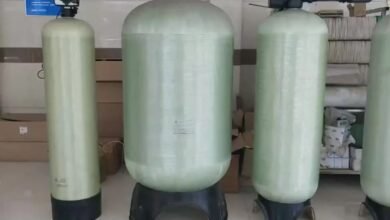Elevating Performance: The Role Of The 100ah 12v Deep Cycle

When it comes to powering up various applications, the 100ah 12v Deep Cycle plays a crucial role in ensuring optimal performance. Whether it’s for marine, RV, solar, or other off-grid systems, this type of battery offers long-lasting power and reliability. The significance of the 100-ah capacity, compare its performance with other batteries, discuss how to maximise efficiency with a deep cycle 12v 100-ah, provide maintenance tips for longevity, explore the future of deep-cycle batteries, and address environmental responsibility and sustainability.
The Significance Of The 100-Ah Capacity
The 100-ah capacity of a 12volt Deep-Cycle Battery represents its ability to deliver a steady supply of 100 amp-hours of power. This substantial capacity marks it as an essential component for a range of applications that demand a consistent and prolonged energy output. The defining attribute of this capacity ensures that devices such as appliances in recreational vehicles or lighting systems on vessels maintain operational efficiency over extensive periods without necessitating frequent recharges. It becomes particularly advantageous in scenarios where access to conventional power sources is limited or non-existent.
The robustness of the 100-ah battery allows users to rely on a dependable power supply, thereby enhancing the usability and convenience of various systems. This feature is pivotal in facilitating uninterrupted experiences in off-grid living, marine explorations, and during extended travels, where energy requirements are continuous and critical. The inherent reliability and endurance of the 100-ah capacity are what differentiate these batteries from their counterparts, offering a solution that aligns with the demands of sustained usage while promoting energy independence across diverse settings.
Comparing Performance with Other Batteries
In an exploration of the performance landscape of batteries, the 100-ah 12volt Deep-Cycle Battery distinguishes itself by its capacity for sustained energy delivery. This contrasts sharply with the operational characteristics of traditional starter batteries, which are engineered for instantaneous high-power output necessary for igniting engines, rather than for prolonged discharge rates. Deep-cycle batteries, exemplified by the 100-ah 12volt variant, are inherently designed to endure deeper discharge cycles, making them perfectly suited for applications that demand a consistent and long-term power supply, such as in solar energy systems or for powering electric vehicles.
Moreover, the efficiency of the 100-ah 12volt Deep-Cycle Battery is further highlighted when compared to other varieties of rechargeable batteries, including those used in portable electronic devices or backup power systems. These batteries typically do not support the deep discharge levels well, nor do they offer the same longevity in terms of life cycles when subjected to similar conditions. The depth of discharge (DoD) that deep-cycle batteries can handle without significant degradation stands as a testament to their robustness and suitability for demanding applications.
This capacity for deeper discharge without compromising battery life is a crucial advantage in scenarios where consistent power is paramount, and access to charging facilities may be infrequent. As such, the 100-ah 12volt Deep-Cycle Battery emerges as a superior choice for those seeking reliability and performance in energy storage solutions. Its attributes underscore the importance of selecting the right battery type based on specific energy needs and usage patterns, reinforcing the notion that deep-cycle batteries offer a distinct performance edge for long-term, high-demand applications.
Maximising Efficiency With A Deep Cycle 12v 100ah
Achieving peak performance from a deep cycle 12v 100ah involves strategic planning and attentive care. Sizing the battery correctly for its intended application is fundamental, ensuring it possesses adequate capacity to meet the power demands of the devices it supplies. A battery that is too small will be under constant strain, leading to premature wear and decreased efficiency, while an excessively large battery may never fully cycle, similarly reducing its lifespan through underutilisation.
Regular maintenance routines are essential for sustaining battery health. This includes periodic checks of the battery’s state of charge, ensuring it remains within recommended levels to avoid deep discharges that can severely impact its longevity. Maintaining a clean connection, free from corrosion, ensures optimal performance and efficient power flow. Employing correct charging practices is also vital. Utilising a charger that matches the battery’s specifications promotes efficient charging cycles, reducing the risk of overcharging, which can lead to battery degradation.
It is advisable to use a smart charger capable of adjusting the charge rate depending on the battery’s condition, thus preventing damage and extending its useful life. Careful consideration of the battery’s environment contributes to maximising efficiency. Storage in a cool, dry place mitigates the risks associated with temperature extremes, which can accelerate the degradation process. Ensuring good ventilation during operation and charging further protects the battery from overheating, preserving its capacity and performance.
Maintenance and Longevity Tips
Batteries play a crucial role in powering various devices and systems, from smartphones and laptops to vehicles and renewable energy installations. Proper maintenance is essential to ensure optimal performance and longevity. Here are some key maintenance and longevity tips to help you get the most out of your batteries:
Regular Inspections
Schedule periodic inspections of your batteries to check for signs of wear, damage, or corrosion. Look for leaks, bulges, or cracks in the casing, and inspect terminals and connectors for corrosion or loose connections.
Keep it Clean
Clean the terminals and connectors of your batteries regularly to prevent corrosion and ensure good electrical contact. Use a mixture of baking soda and water to remove corrosion, and dry thoroughly before reconnecting.
Proper Charging
Avoid overcharging or deep discharging your batteries, as both can degrade performance and shorten lifespan. Use a charger specifically designed for your battery type and follow manufacturer recommendations for charging voltage and current.
Storage Practices
If storing batteries for an extended period, ensure they are stored in a cool, dry place away from direct sunlight and extreme temperatures. Partially charge or discharge the batteries to approximately 50% capacity before storage to prevent degradation.
The Future of Deep-Cycle Batteries
The horizon for deep-cycle batteries, particularly the 100-ah 12volt Deep-Cycle Battery, is illuminated by promising advancements in technology and sustainability efforts. The relentless pursuit of innovation in battery chemistry and the quest for more sustainable manufacturing practices are set to redefine the landscape of deep-cycle batteries. Emerging technologies in battery design are focusing on enhancing energy density, thereby offering more power in lighter and more compact formats. This evolution is crucial in broadening the applicability of deep-cycle batteries across a diverse array of sectors, including renewable energy storage, electric mobility, and portable power solutions.
A significant area of development is in the realm of alternative materials that promise to reduce the environmental impact of battery production and disposal. Innovations such as lithium iron phosphate (LiFePO4) batteries present an eco-friendlier alternative to traditional lead-acid batteries, offering benefits like longer lifespans, higher efficiency, and reduced weight without the same level of toxic components. These advancements herald a future where deep-cycle batteries not only continue to meet the growing energy demands but also align with global sustainability goals.
Additionally, the integration of smart technology into battery systems is becoming increasingly prevalent. Features such as remote monitoring and management capabilities are being developed to optimise battery performance and lifespan further. These smart batteries can efficiently communicate data on their health and usage, enabling predictive maintenance and reducing the likelihood of unexpected failures.
Environmental Responsibility: Recycling and Disposal of 12v 100ah Deep Cycle
The importance of environmental stewardship in relation to deep-cycle batteries, particularly those with a capacity of 100-ah and a voltage of 12 volts, requires a responsible approach to their end-of-life phase. The components within 12v 100ah Deep Cycle, while necessary for their efficient operation, pose potential environmental hazards if not handled carefully when disposed of. The lead-acid composition, which is common in many deep-cycle batteries, presents a significant opportunity for recycling; however, it also poses a risk to the environment and human health if not discarded properly.
Initiatives focused on recycling and proper disposal of these batteries have become increasingly important. Such programmes are crucial in reducing the environmental impact associated with hazardous waste. They ensure that valuable materials, such as lead and acid, are recovered and repurposed, thereby reducing the need for raw material extraction and minimising the carbon footprint associated with the production of new batteries. The process involves collecting spent batteries, which are then transported to specialised facilities where they undergo a series of treatments to safely extract toxic components and salvage recyclable materials. This cycle not only highlights the commitment to preserving natural resources but also aligns with broader sustainability goals by promoting a circular economy model.
Legislation in various regions mandates the responsible recycling of lead-acid batteries, emphasising the legal obligation alongside the moral imperative. As the industry continues to evolve, with a growing emphasis on sustainable practices, the adoption of advanced recycling technologies and methodologies holds promise for enhancing the efficiency and effectiveness of battery disposal, further contributing to environmental conservation efforts.
Environmental Impact and Sustainability
Deep-cycle batteries, particularly those with specifications such as the 100-ah 12volt Deep-Cycle Battery, occupy a significant position within sustainable energy systems, exemplified by their application in solar and wind power projects. Their ability to provide steadfast and enduring power substantially diminishes reliance on conventional fossil fuels, fostering a transition towards more ecologically sound energy resources. This shift is not merely beneficial from an operational standpoint but also embodies a broader environmental stewardship, underpinning efforts to mitigate climate change and reduce greenhouse gas emissions.
The deployment of deep-cycle batteries underscores their pivotal role in enhancing the efficiency and reliability of renewable energy systems. By facilitating effective energy storage, these batteries ensure the maximisation of renewable resources, allowing for energy to be stored during periods of surplus production and utilised during times of high demand or low generation. This dynamic significantly contributes to the stabilisation of the energy grid and underscores the versatility of deep-cycle batteries in promoting renewable energy integration.
In addition, the lifecycle of the 100-ah 12 volts Deep-Cycle Battery incorporates considerations for environmental impact beyond their operational phase. Efforts to improve recycling and disposal methods for these batteries are reflective of an industry-wide commitment to sustainability. Advanced recycling technologies not only prevent hazardous materials from entering the ecosystem but also contribute to the circular economy by reclaiming valuable components for reuse.
Achieving Long-Term Value from Deep-Cycle Batteries
Maximising the lifespan and efficiency of deep-cycle batteries, particularly those with specifications such as a 100-ah 12 volts Deep-Cycle Battery, is pivotal for ensuring users attain the maximum value from their energy storage solutions. These batteries, when leveraged in appropriate applications, embody a cost-effective approach to fulfilling power requirements over an extended period. The cornerstone of extracting long-term value lies in adhering to a regimen of meticulous maintenance and utilising the batteries within their optimal operational parameters.
An investment in a 100-ah 12 volts Deep-Cycle Battery transcends its initial purchase; it encompasses a commitment to sustaining the battery’s health through regular checks and balances. This involves monitoring charge levels to avoid the detrimental effects of deep discharges and overcharging, both of which can prematurely diminish the battery’s lifespan. Furthermore, ensuring the battery is deployed in conditions that align with its designed specifications is critical. This includes consideration of the environmental factors such as temperature, which can significantly impact battery performance and longevity.
The strategic utilisation of deep-cycle batteries in scenarios that match their discharge characteristics can enhance their operational life. This means selecting applications that benefit from the battery’s capacity to deliver power at a steady rate over prolonged periods, as opposed to high-intensity short bursts. Such judicious use, combined with adherence to recommended maintenance practices, propels these batteries to deliver optimal performance, thereby maximising the return on investment for users. Through this approach, the enduring value of deep-cycle batteries is realised, cementing their status as a prudent choice for sustainable and reliable power solutions.
Conclusion
In the exploration of the 100ah 12v Deep Cycle, its critical role across various sectors has been illuminated. From the robust capacity that underpins reliable power in off-grid living to the advancements paving the way for a sustainable future, this battery type stands at the forefront of energy solutions. The discussions have navigated through the nuances of performance, efficiency, maintenance, and the overarching environmental responsibilities, all of which underscore the battery’s significance.
FAQs
What distinguishes the 100Ah 12V deep cycle from other energy storage options?
The 100Ah 12V deep cycle offers a high capacity and is specifically designed for long-term, sustained power delivery, making it ideal for applications requiring reliable energy over extended periods.
How does the 100-Ah 12V deep cycle battery benefits off-grid systems?
With its ability to withstand repeated deep discharges and recharges, the 100-Ah 12V battery provides a dependable power source for off-grid setups, ensuring continuous energy supply even in remote locations.
What makes the 100-Ah 12V deep-cycle battery suitable for marine use?
Its robust construction and resistance to vibration and shock make the 100-Ah 12V deep cycle battery well-suited for marine applications, providing reliable power for boats, yachts, and other watercraft.
Can the 100-Ah 12V deep-cycle battery is used in solar energy systems?
Yes, its deep cycling capabilities make the 100-Ah 12V battery an excellent choice for storing and delivering energy from solar panels, enabling sustainable and efficient power generation.
How does the 100-Ah 12V deep-cycle battery contributes to environmental sustainability?
By enabling the efficient storage and utilization of renewable energy sources like solar power, the 100-Ah 12V deep-cycle battery helps reduce dependence on fossil fuels, thereby promoting environmental sustainability and reducing carbon emissions.
| Related Business Listings |
| Contact Directory |
| Local Business Profiles |




